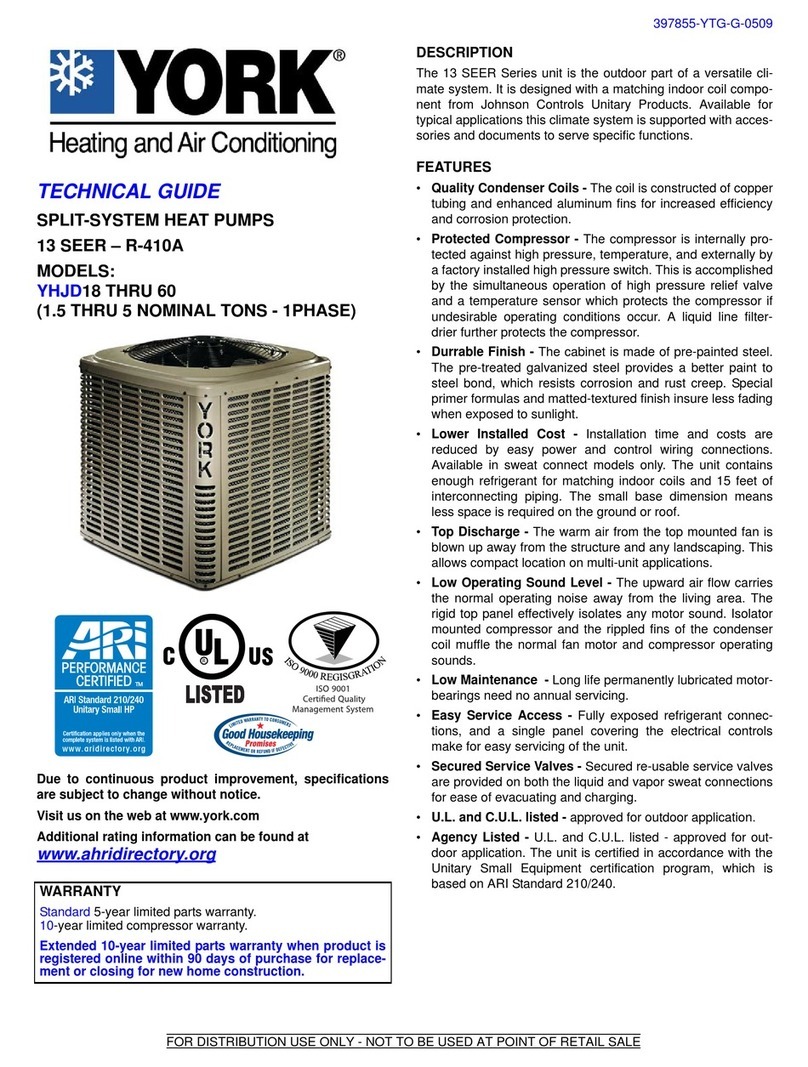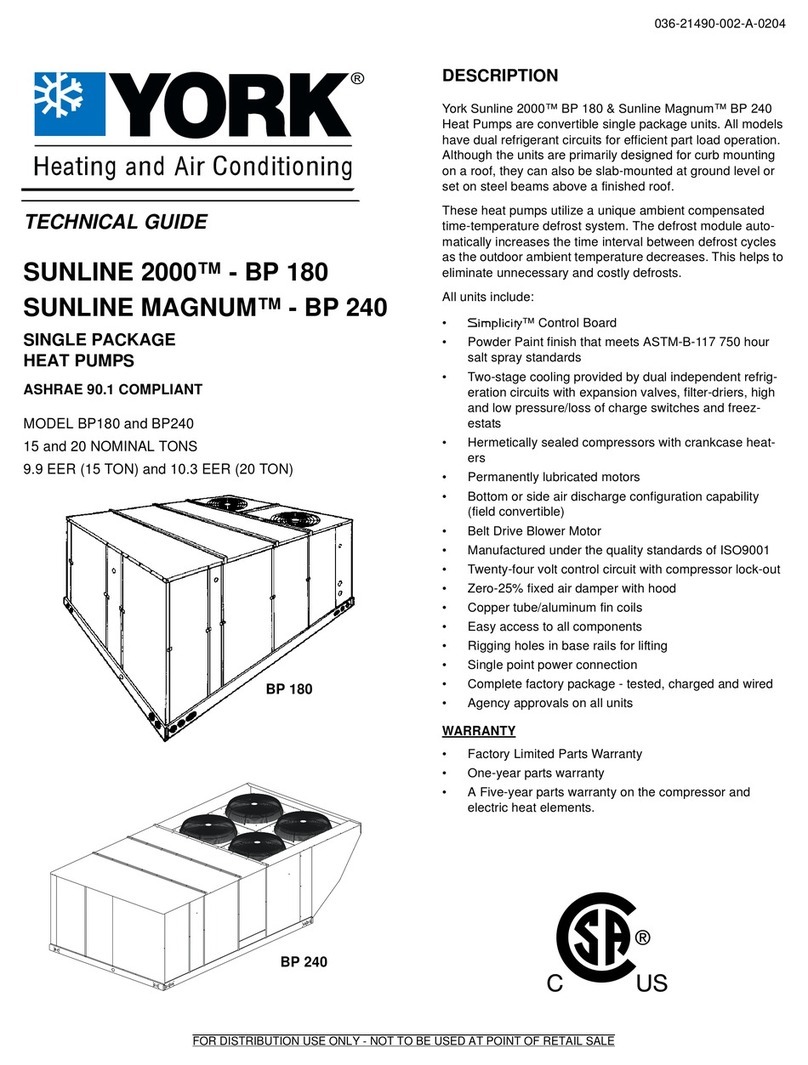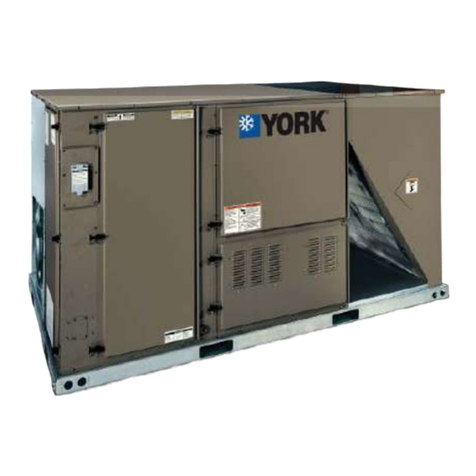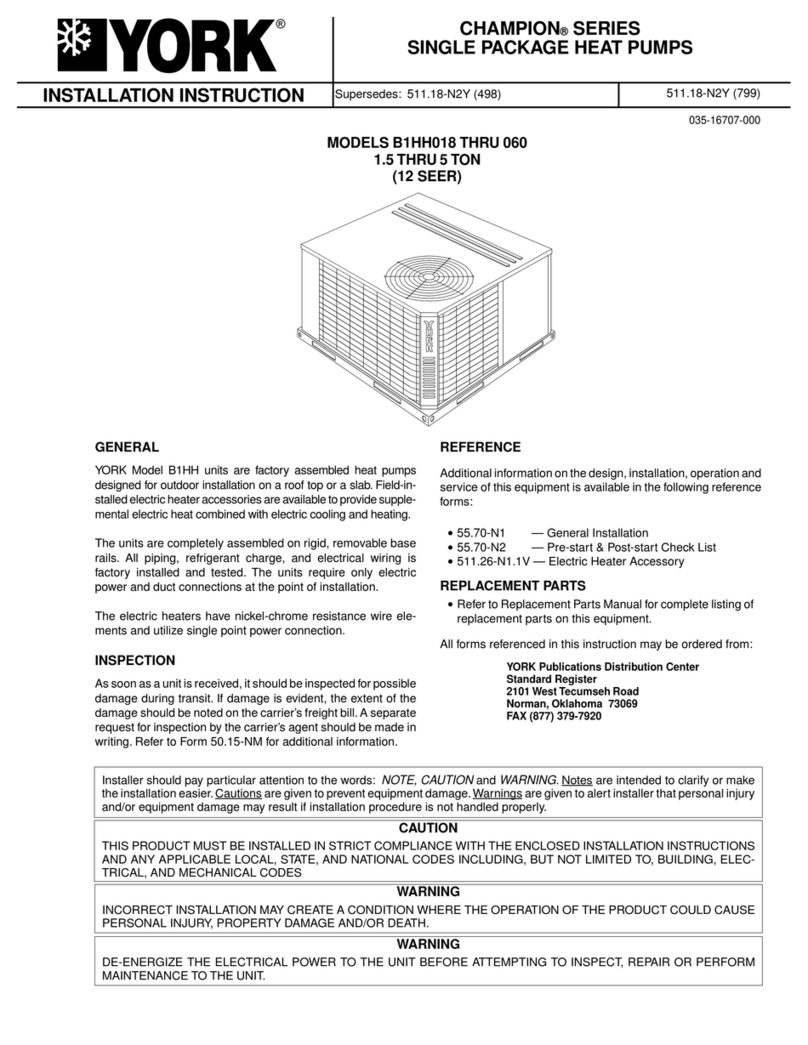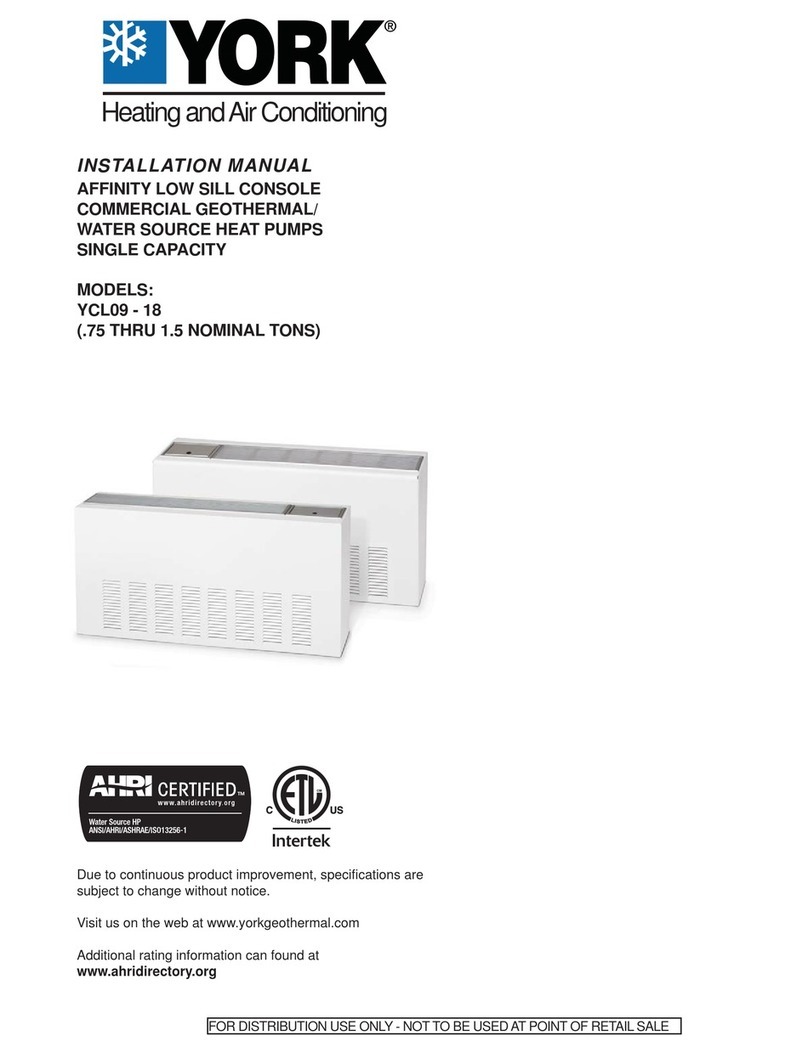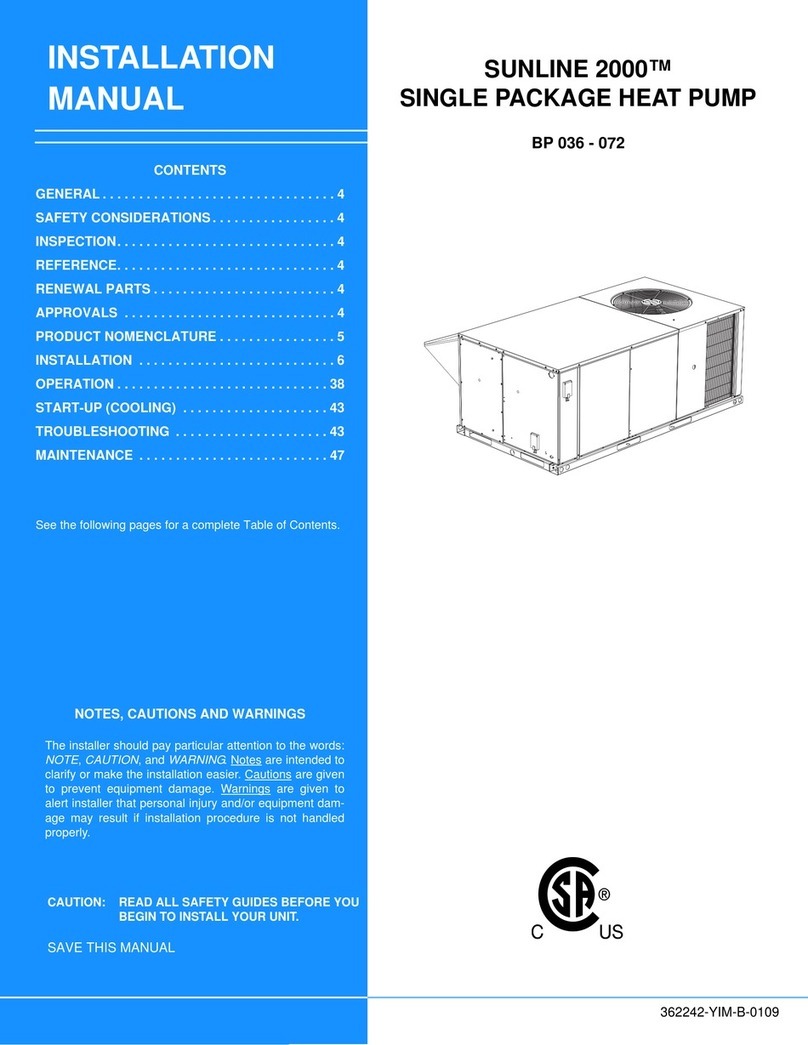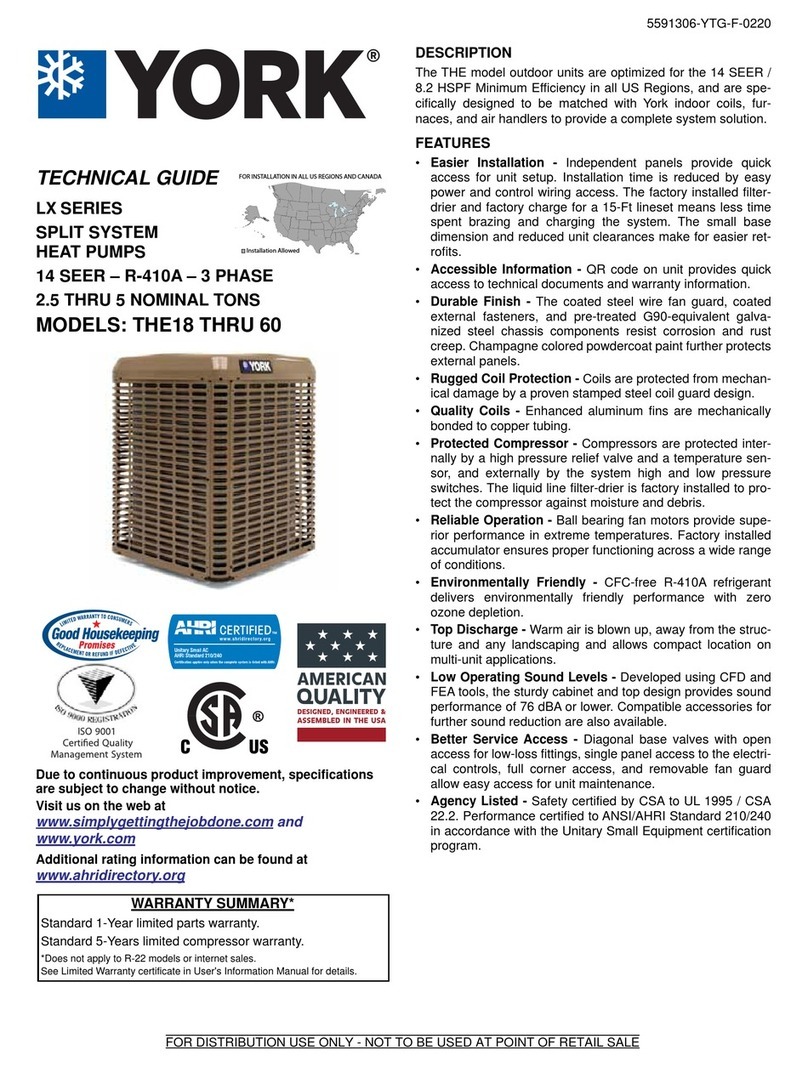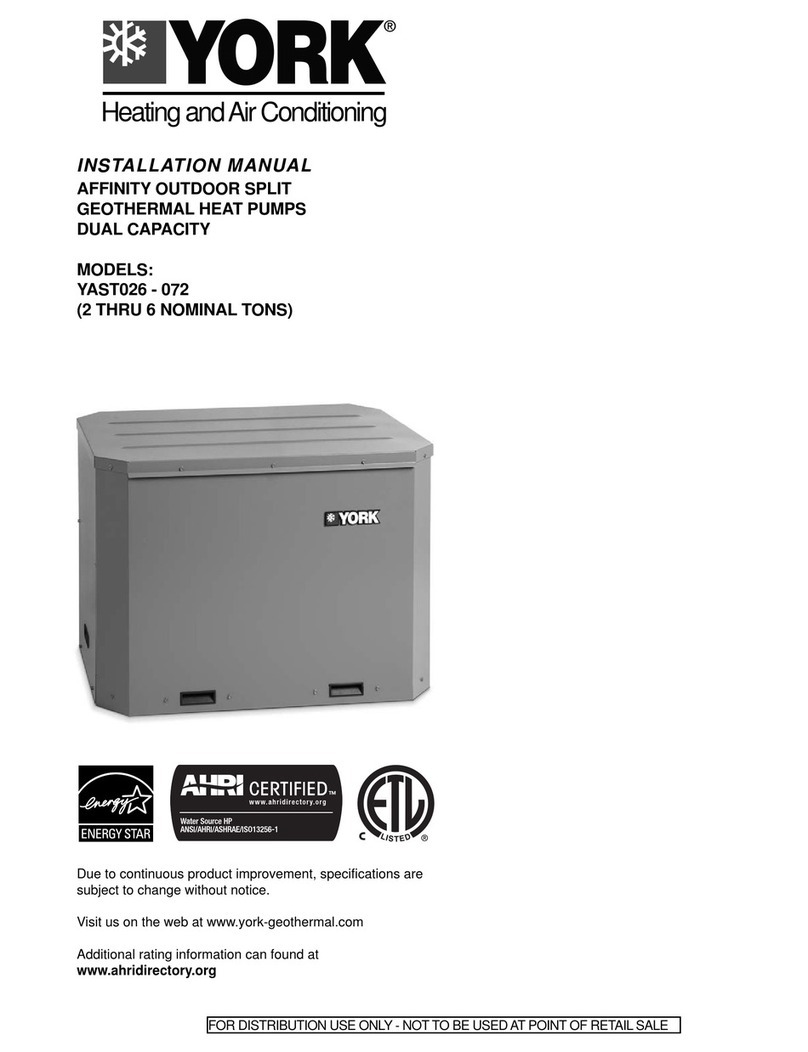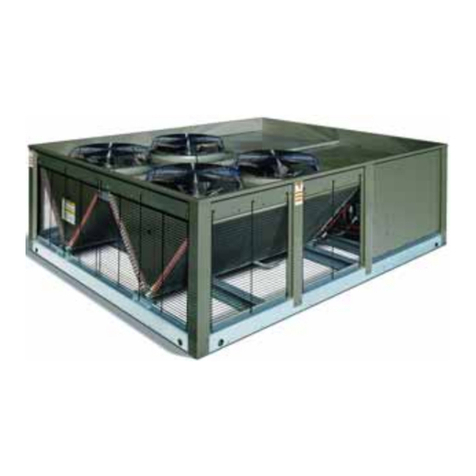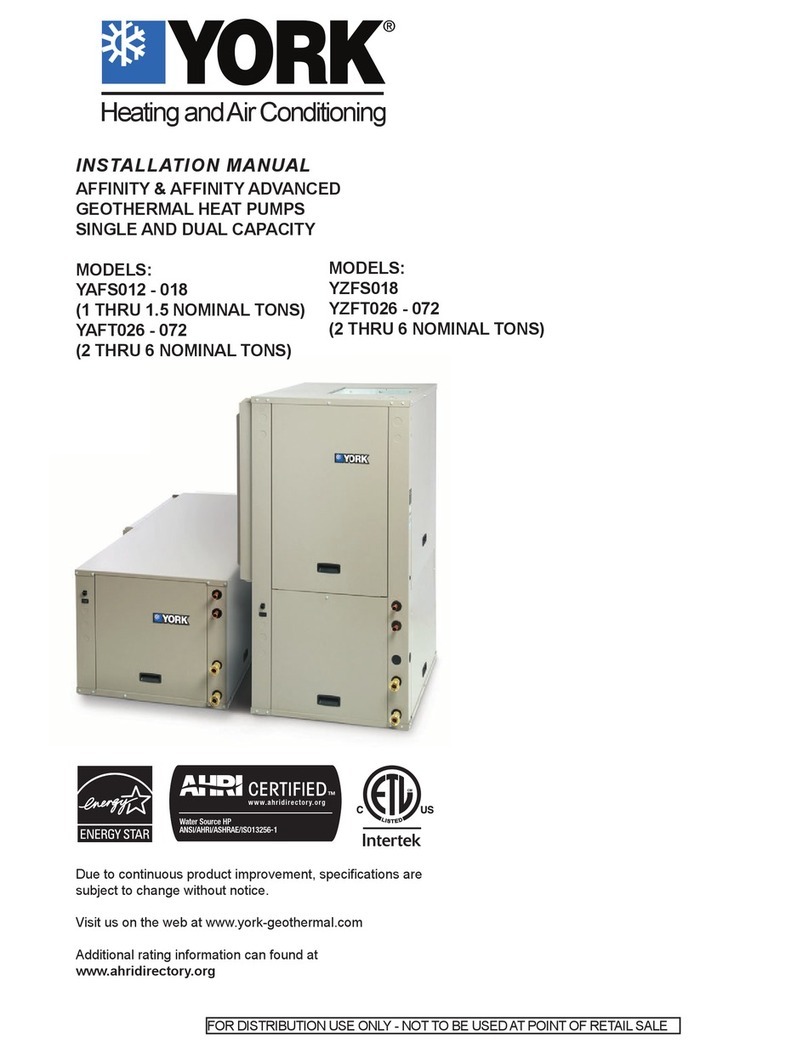
6. Protect the vaporfitting with a wetrag and braze the vapor
line connection. The nitrogen flow should be exiting the
system from the vapor service port connection. After This
connection has cooled, remove the nitrogen source from
the liquid fitting service port.
7. Evacuate the vapor line, indoor coil and the liquid line. See
“EVACUATION” page 9.
NOTE: Do not use the system refrigerant in the outdoor unit
to purge or leak test.
8. Leak test all refrigerant piping connections including the serv-
ice port flare caps to be sure they are leak tight. DO NOT
OVERTIGHTEN (between 40 and 60 inch - lbs. maximum).
9. Do not remove the flare caps from the serviceports except
when necessary for servicing the system.
CAUTION: Do not connect manifold gauges unless trouble is
suspected. Approximately 3/4 ounce of refrigerant
will be lost eachtime a standard manifold gauge is
connected.
10.Release refrigerant charge into the system. Open both the
liquid and vapor fittings by removing the plunger cap and
with anallen wrench back outcounter-clockwise until valve
stem just touches retaining ring. See Base Valve Connec-
tion Precautions.
11. The sweat connect outdoor unit contains enough refriger-
ant charge for a matched indoor coil and 15 feetof tubing.
Refer to the Table 4 for the amount of additional charge
required for some mix-matched indoor coils. Additional
charge for lines longer than 15 feet is shown in Table 5. If
additional charge is required, see recommended charging
methods.
ROOM THERMOSTAT
Heat pump units must use one of the specific thermostats
approved for use with these heat pump systems. The cooling
and heating anticipators are non-adjustable in these thermo-
stats.
The thermostat should be located about 5 ft. above the floor,
where it will be exposed to normal room air circulation. Do not
place it on an outside wall or where it is exposedto the radiant
effect from exposed glass or appliances, drafts from outside
doors or supply air grilles.
Mountthethermostatandroutethe24-voltcontrol wiring(NEC
Class 2) from the thermostat to the indoor and outdoor units.
To eliminate erratic operation, seal the hole in the wall at the
thermostat with permagum or equivalent to prevent air drafts
affecting the anticipators in the thermostat.
Route the control wiring into the outdoor unit through the hole
provided. Connect the control wiring, see Figure 4 or 5 for
Typical Field Wiring.
EVACUATION
It will be necessary to evacuate the system if the unit has
developedaleakduringshipmentorwas,foranyotherreason,
opened to the atmosphere. If a leak is suspected, leak test to
locate the leak. Repair the leak and test again.
WARNING:Never attempt to repair any brazed connections
whilethesystemisunderpressure.Personalinjury
could result.
To verify if the system has no leaks, simply close the valve to
the vacuum pump suction to isolate the pump and hold the
system under vacuum. Watch the micron guage for a few
minutes.Ifthemicrongaugeindicatesasteadyandcontinuous
rise, it’s an indication of a leak. If the gauge shows a rise, then
levels off aftera few minutes and remains fairly constant,its an
indicationthatthesystemis leak free but still contains moisture
and may require further evacation if the reading is above 500
microns.
SYSTEM CHARGE
CAUTION: Refrigerant charging should onlybe carried out by
a qualified air conditioning contractor with proper
certification.
The factory charge in the outdoor unit is listed in Table 4 and
includes enough chargeforthe unitand a matchedindoorcoil.
Sweat connect units also include sufficient charge for 15 feet
of lines. Pre-charged line lengths are factory charged with the
correct amount of refrigerant required.
Sweat connect installations over 15 feet long and some indoor
coil matchesmay requiresomeadditional charge. Table5 lists
the amount of any additional refrigerant required.
The “TOTAL SYSTEM CHARGE” must be permanently
stamped on the unit data plate.
Total system charge is determined as follows:
1. Determine the outdoor unit charge from Table 4.
2. Determine indoor coil adjustment from Table 4.
3. Calculate the line charge with the factors in Table 5.
a) Calculate total length of pre-charged lines for quick
connect units.
b) Calculate over 15 feet of sweat lines for sweat connect
units.
NOTE: The charge for pre-charged lines should be included
inthesystemcharge shownonthedata platebutneed
not be added to the system. If sweat connect lines are
used, the line charge over 15 feet should be included
on the data plate and mustbe added to the system.
4. Total systemcharge = item1 + item 2 + item 3.
5. Permanentlystamptheunitdataplatewiththetotalamount
of refrigerant in the system.
LIQUID OD VAPOR OD R-22 CHARGE OZ./FT.
3⁄8”5⁄8“ 0.66
3⁄8”3⁄4” 0.68
3⁄8”7⁄8” 0.70
TABLE 5 - REFRIGERANT LINE CHARGES
515.26-N5Y
Unitary Products Group 9


